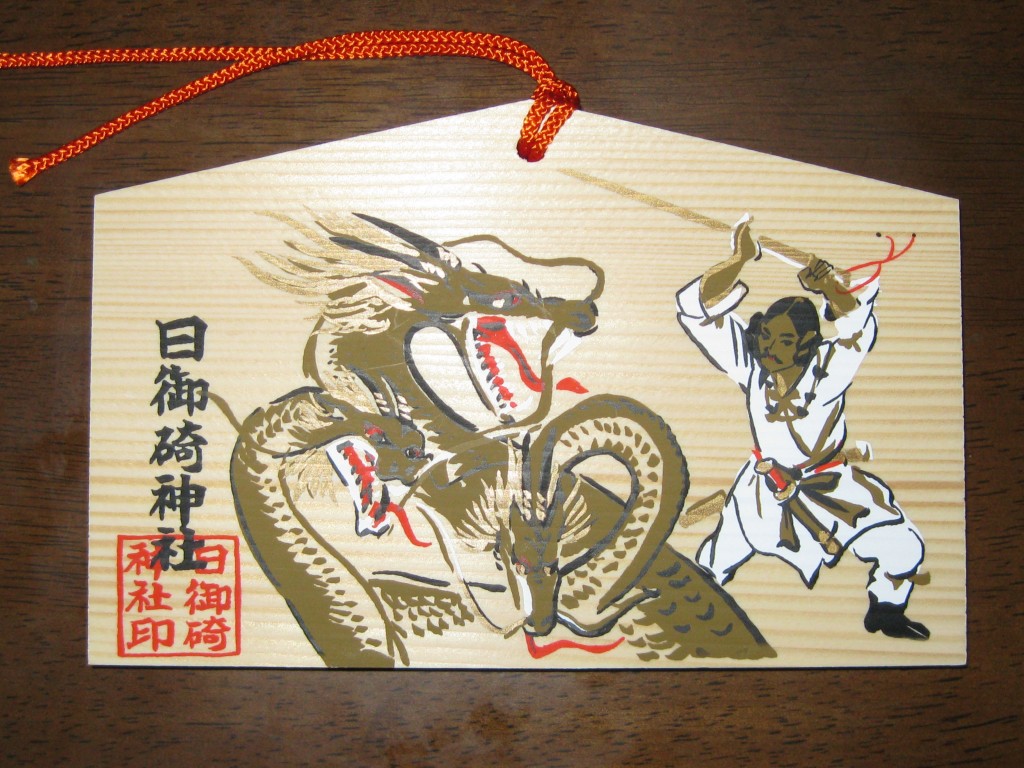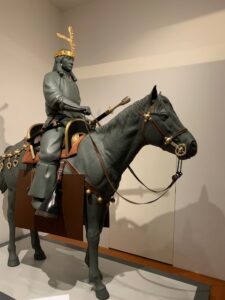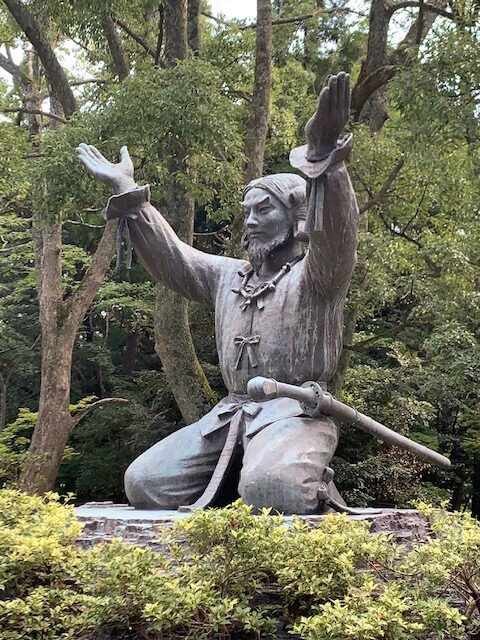
My favourite places are those enriched by myth and unspoilt by the ravages of modern life. The west of England, for instance, with its Arthurian tales and Glastonbury mystique. Here in Japan the time-honoured pathways of Kumano have similar appeal, but they pale in comparison to the allure of Izumo. It is the setting for almost one third of Japan’s mythology in Kojiki (712), and in ancient times it was capital of a kingdom that rivalled that of the dominant Yamato in the Nara basin.
Izumo Taisha (Grand Shrine), pictured above, is an imposing structure. But more than that, it is an institution, a symbol, a reminder of a once glorious past. It has claims to be the oldest of all Shinto shrines, dating back to a time before the imperial line ‘descended from heaven’. It is Japan’s foremost shrine for enmusubi (love connections), in addition to which it has the biggest Inner Sanctuary in the country and the largest shimenawa rope in the world. And as if that is not enough, experts think the shrine may once have been the tallest building on earth. Just imagine that.
In terms of prestige, Izumo ranks second only to Ise Shrine. It stands on the dark side of Japan, opposite the sunny Pacific, and is associated, fittingly, with the unruly storm god Susanoo no mikoto. Brother of the sun goddess Amaterasu, he held an exalted position amongst the heavenly array, but the youthful rebel was a complex character, impetuous and temperamental. Not surprisingly, today he haunts the imagination of manga and anime creators.
Distraught by the death of his mother, Susanoo upset the heavenly harmony with his grief and howling. Such was his tantrum, he went on a rampage, excreting in the sacred rice fields and throwing a flayed horse among the women in the weaving room. One of them was so startled she stabbed her private parts with a needle.
For his sins Susanoo was exiled from heaven, and descended to earth at Izumo where an eight-headed serpent called Yamata Orochi was terrifying the locals. The chieftain had eight daughters, seven of whom had already been devoured by the monster, and Susanoo vowed to save the eighth. Cunningly, he put out eight buckets of saké for each of the serpent’s heads, and when it was befuddled he attacked and killed it.
In the tail of the serpent Susanoo found a sword called Kusanagi no Tsurugi (Grass-cutting Sword). It was so precious that he presented it to Amaterasu, who forgave him for his bad behaviour. Later the sword was handed to her grandson when he descended to earth, and today it continues to play a part in Japanese affairs, for it is one of the three imperial regalia used in ascension rites.
There are many ways of interpreting myth – culturally, literally, historically, psychologically, spiritually. My instinct is to view it as history adorned in fantasy. In this case Susanoo may represent the leader of immigrants from Scilla (a Korean kingdom), who arrived on the Shimane coast near Izumo and defeated a many-headed coalition of chieftains. (There are seaside shrines that claim to be the landing spot.)
By contrast, the Yamato clan, who eventually took over Japan, are thought to have arrived from Paekche, a different Korean kingdom. The Yamato and Izumo leaders were thus related, but rivals with different origins. This equates in myth to the imaginative brother-sister pairing of Amaterasu and Susanoo. Excavation of imperial graves would no doubt reveal the truth of the matter, but it is strictly forbidden to disturb the emperor’s ancestral spirits. The real reason, it is said, is fear of unearthing Korean origins.
At some point the Yamato Kingdom achieved hegemony, though historians disagree about the date. Accounts compiled later tell of Izumo ceding temporal power in return for spiritual dominion. In this regard, Matsumoto Naoki of Waseda University poses an interesting question to his compatriots: ’When did we become Japanese?’. He points out that Yamato rulers integrated into their mythology the gods of those they subdued, similar to the colonising policy of ancient Rome. In this case Yamato may have absorbed Izumo myths by integrating their hero, Susanoo, into Yamato mythology as a younger and unruly brother of Amaterasu. Looking at the available evidence, Matsumoto believes the ceding of Izumo to Yamato took place in 380 AD, which is the answer he gives to his question. So there we have it: Japan began in 380, and Izumo was key.





Leave a Reply